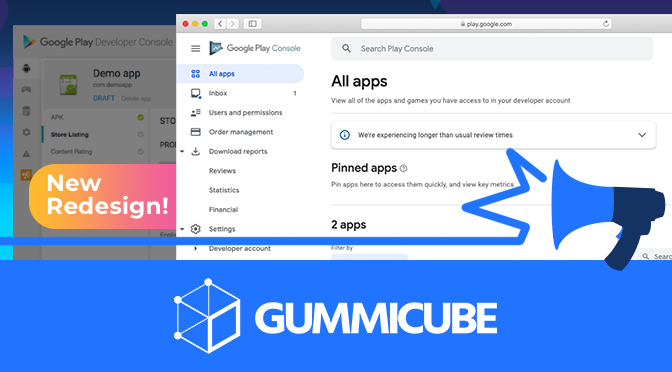
App Store Holiday Schedule 2020
Posted on November 23rd, 2020
When is the App Store Holiday Schedule 2020? Learn about the dates of this year's shutdown and how to prepare.

2018 was quite the year for the mobile app market. Between innovations in app technology, changes to the app stores, new devices and more, it’s a world very different from what we saw at the beginning of the year. As such, with 2018 drawing to a close, it’s time to look back and see what changes the year brought.
Apple Search Ads saw several enhancements over the year, with the addition of new features, territories and localization options. In June, Apple added creative sets to Search Ads, so that developers can set different creatives for their campaigns based on the keywords and audiences they’re targeting. The following month, Apple expanded Search Ads’ territories, increasing them from 7 to 13. This opened more opportunities for developers to market their apps through Search Ads to new audiences. Later on, it also added new localizations and languages to Search Ads, enabling ads to reach users across languages as well as territories. Then, in November, Search Ads began providing developers with bid suggestions. This gives developers with a good guideline for how much they should make their maximum bid for each keyword to better utilize their marketing budget. Last but not least, Apple recently added new reporting tools. These enable custom reports based on a number of metrics and dimensions so that developers can determine how every aspect of their Search Ads campaign is performing.
The Google Play Store underwent a number of updates throughout 2018, ranging from the cosmetic adjustments to overhauls that impact ASO. The most notable change was the feature graphic moving from the top of the screen to be placed with the rest of the screenshots as the image for the app’s video. However, the changes don’t stop there. Near the end of March, Google began testing redesigns to the Play Store. This changed the design based on whether or not the user viewing the page has the app installed. It also added a “Try Now” button for pages enabled with instant apps and enhanced the navigation bar. In October, the app page was redesigned to move the screenshot gallery closer to the top of the page, in part due to the change in the feature graphic. It also made the app’s category, ranking and acclaim easier to see, along with an updated Evaluation Panel. The most recent redesign impacted the Ratings & Reviews, changing the visual designs and replacing the “top features” with a list of phrases commonly mentioned in the reviews. This also added a review filter that makes it easier for users to view reviews. On the marketing side, Google changed its advertising products into Google Ads, Google Marketing Platform and Google Ad Manager. Google Ads has replaced Google UAC and Google AdWords, although existing advertising campaigns continued on unabated. Additionally, Google introduced new machine learning tools to improve their marketing campaigns. Android app developers can now also create adaptive icons, which will display as square or circular images based on the device using them.
Augmented Reality (AR) has seen a fantastic level of growth over the year. Apple and Google have both begun investing more in their AR technology, enabling developers to make higher-quality augmented reality content. Apple introduced ARKit 2, which expands its augmented reality features to better incorporate items and dimensions from the real world and enable multiplayer AR. To demonstrate this, it created a new Measure app, which uses augmented reality to measure objects and distances right from the camera. Similarly, Google announced at Google I/O that it would be adding ARCode support. Google has also begun combining augmented reality with instant apps. For instance, it is enabling users to scan an item using augmented reality to then pull up information on it, which could then be used to launch a shopping app and purchase it. Meanwhile, mobile game developers continue to integrate AR into their games. The trend may have gained the most notoriety with Pokemon GO, but we’re now seeing it in games based off “Ghostbusters,” “Jurassic Park” and even an upcoming “Harry Potter” game. AR is a trend that is continuing to grow.
The biggest news for virtual assistants was Apple’s release of SiriKit and Siri Shortcuts. This new extension for its Siri virtual assistant enables developers to create shortcuts for their apps that users can access through Siri voice commands. It can work with a wide variety of apps, from shopping to navigation to mobile games, so developers are working hard to enable Shortcuts for their apps. Google is not left behind, however, with new updates for Google Assistant. This includes several new voices (including Grammy Award winner John Legend), custom routines similar to Siri Shortcuts, continued conversations for context-based follow-up queries and even an optional “pretty please” feature that reminds users to be polite.
Both Apple and Google had several new announcements about upcoming devices and operating systems. This was the year of iPhone XS, XS Max and XR, in addition to the announcement of a new iPad Pro. With the new devices comes the iOS 12 update, enabling new updates such as Siri Shortcuts and new Screen Time features. Following the update, Apple has informed developers that they have until March 2019 to build their apps with the new iOS 12 SDK. Apps that have not been updated accordingly by then will be rejected from the app store. On Google’s end, the company went over the Android P operating system during Google I/O. They’re also preparing for Android Foldables by laying out the groundwork for apps that fold and expand with the screen, in addition to the third beta release of Android Studio 3.3. While much is still in development, there’s a lot to look forward to in 2019.
While those may have been the biggest announcements of 2018, there was still much more news in the world of app development. Google introduced Android Slices, enabling engagement with apps without having to fully open them. The company also enabled updates from directly within the app, adding new subscription services, and introduced new metrics and monitoring. Users can also find streaming apps while searching for the show itself. Furthermore, Google introduced ML Kit, which is cross-platform and enables developers to integrate pre-build machine learning models into their apps. Apple updated the number of screenshots it allows on the App Store, so an app can include up to ten screenshots per app. It also changed iTunes Connect to App Store Connect, and added a territory filter. It also ended the Affiliate Program, which removed a source of traffic for apps within the program. This increased the importance of its mobile app store as a source for discovery, rather than third party referral sites. It’s been quite the year for the mobile app market, but developers with strong App Store Optimization strategies have been able to keep up with every change and make the most of them. 2019 promises to be another big year, so as 2018 nears its end, we can look forward to a bright future.

When is the App Store Holiday Schedule 2020? Learn about the dates of this year's shutdown and how to prepare.

Apple's App Store Guidelines have strict privacy requirements. Developers now must provide information to users on the App Store listing regarding the data they access.

The Google Play Developer Console has been updated with a new design and adjusted tools. What's different, and how will it impact App Store Optimization?